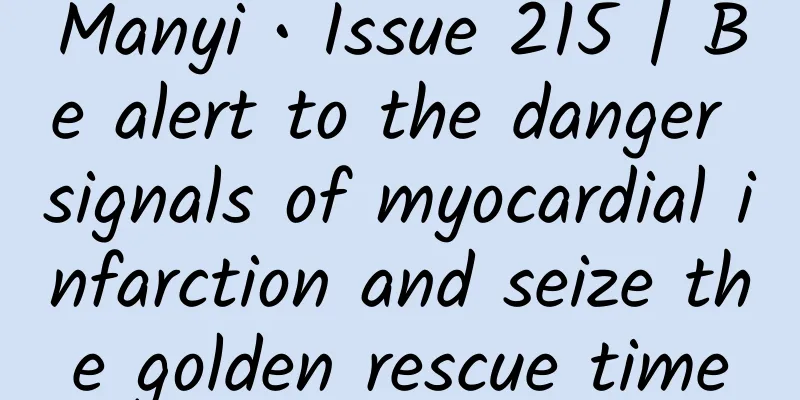The follicle turned into a cyst and I got pregnant

|
Many female friends will find that they have not ovulated for a long time, so they worry about the occurrence of follicular cysts. This is indeed possible, especially for a long time. Once the ovulation period is hindered, it will affect the output rate of egg cells, thereby affecting pregnancy. Below I will explain to you the relevant health education knowledge about follicular cysts. 1. What is the reason for pregnancy despite ovulation-induced follicular cysts? 1. Under normal circumstances, when the uterus develops to a certain diameter, it will become a mature follicle. The diameter of the egg generally does not exceed 1.5 cm. If the egg is deformed or ruptured during the growth process, a cystic egg will be formed. If the diameter exceeds 2.5 cm, it will become a follicular cyst. 2. Follicular cysts will affect women's pregnancy. We all know that if women want to have a baby, the health of the uterus and ovaries is very important. The uterus and ovaries will produce a certain amount of estrogen. If a normal person cannot ovulate, it will be absorbed and dissipated automatically after reaching a certain level, and will not affect pregnancy. However, if it is physiological, and the follicular cyst is not treated for a long time, it will gradually expand, and eventually the normal function of the uterus and ovaries will be suppressed, the endocrine function will be unbalanced, and the quality of the egg cells will be poor, affecting women's pregnancy. 2. What to do with follicular cysts Follicular cysts are generally discovered accidentally during gynecological examinations or cesarean sections without active symptoms. Follicular cysts will naturally be absorbed and disappear after 4-6 weeks. In some cases, the continued metabolism of estrogen by the egg causes excessive endometrial hyperplasia and postmenopausal vaginal bleeding, which can cause pseudo-precocious puberty in girls. Physiologic follicular cysts require prompt medical attention. Based on clinical symptoms, clinical features and the above tests, the criteria for diagnosing fetal and newborn cystic eggs and follicular cysts can be made. The former is classified as an egg diameter of 0.5-1cm and the latter is more than 1cm. The common methods of examining follicular cysts are: 1. Laboratory examination: female hormone test, tumor marker test. 2. Other auxiliary examinations: histopathological and physiological examinations. The above is the health education knowledge about ovulation follicular cysts. This will affect women's pregnancy, but pregnancy will occur. It will only affect, usually delayed fertilization, because the output of eggs is slowed down, which is usually related to the body's estrogen. It is recommended to see a doctor immediately after testing, and it can still be completely cured. |
<<: I'm a virgin but my vagina is itchy
>>: Illustration of the happy pulse and normal pulse
Recommend
Can I eat baby formula during menstruation?
Some female friends may consume infant formula on...
[Medical Q&A] Will the heart quietly become "fat" if you have long-term high blood pressure?
Author: Liu Machao Xuanwu Hospital, Capital Medic...
Is summer not a good time to have cataract surgery? What do experts say?
Every summer, I always hear this question: It'...
"I feel sorry for my boyfriend because I'm not a virgin."
"I feel sorry for my boyfriend because I'...
Premature ovarian failure moxibustion single Guimin
Due to the unhealthy lifestyle today, many women ...
How to recover your eyes after crying after giving birth?
In life, everyone knows that women are very weak ...
Can pregnant women drink mineral water?
After becoming pregnant, women tend to be very ca...
Will multiple cervical cysts turn into cancer?
Multiple cervical cysts are the most common type ...
What to do if your hand joints hurt after abortion
If joint pain occurs after miscarriage or pregnan...
Green skin and green flesh of the mushroom melon, crispy, sweet and delicious~
Author: Fluent Do you know what is the most seaso...
Should I do a gastroscopy for abdominal distension? What tests should I do for frequent abdominal distension?
Many times we feel that our stomachs are bloated ...
7 ways to keep women beautiful for life
Beauty is always a big deal for women. Some peopl...
Can deer placenta cream cure uterine cold? Female friends, please read this carefully.
Many women in Sha County know about the product c...
What are the most effective ways to enlarge breasts after childbirth?
Women cannot choose breast enhancement methods ra...
The test paper is one deep and one shallow, and no gestational sac is found on B-ultrasound
The pregnancy test stick can show one or two bars...









